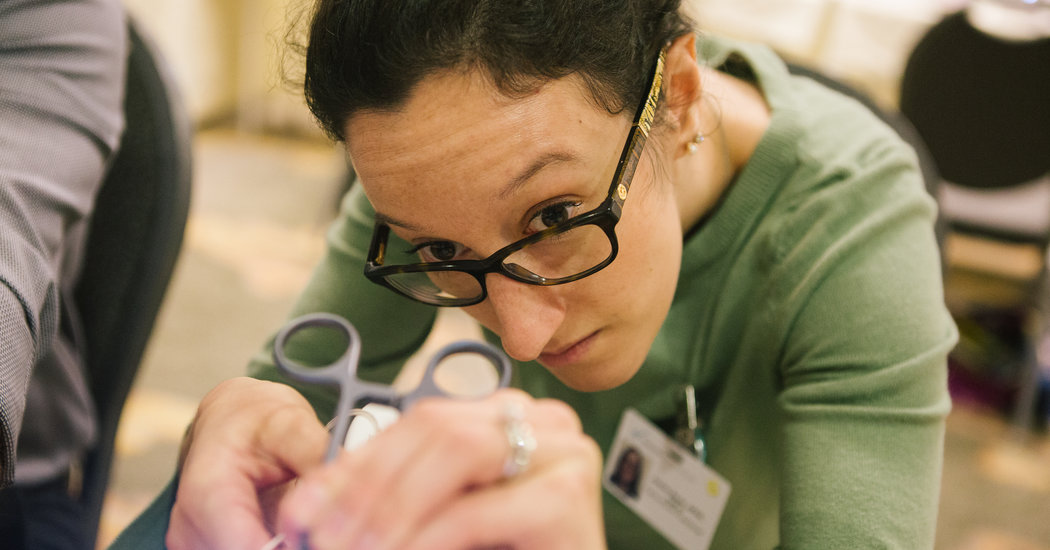
In the days after President Trump was elected, some women saw his victory as reason to worry: Would he fulfill his campaign promise to repeal the Affordable Care Act? And if so, would it eventually become harder and costlier to obtain birth control?
News organizations sounded the alarm: “Get an IUD Before It’s Too Late,” a Daily Beast headline warned. “Here’s Why Everyone Is Saying to Get an IUD Today,” said a New York Magazine piece.
In November 2016, Sarah Christopherson, the policy advocacy director at the National Women’s Health Network, told Broadly, a branch of Vice Media, that women should be “very, very worried” about birth control.
So did women rush to obtain intrauterine devices and contraceptive implants?
A study published on Monday in JAMA Internal Medicine supports what doctors had already observed: There was an increase in the insertion rate of long-acting reversible birth control devices soon after the 2016 presidential election.
“The unique thing about IUDs and implants is that they last for so long,” said Dr. Lydia Pace, an assistant professor of medicine at Harvard Medical School and the lead author of the study. Because the devices were so long-lasting, women were taking advantage of insurance coverage provided under the Affordable Care Act, and getting a birth control method with the longevity to weather potential policy changes.
The IUD, a small device placed in the uterus, has been shown to be more than 99 percent effective at preventing pregnancy and can work for up to 12 years, depending on the type. But without insurance coverage, IUDs can be expensive: Out-of-pocket costs can be from $500 to $1,000. Implants are also more than 99 percent effective and last up to five years, but can cost up to $1,300 without insurance.
The study, which only looked at women enrolled in commercial health insurance, found a 21.6 percent increase in the insertion rates of long-acting reversible contraceptive methods among women ages 18-45 in the 30 days after President Trump was elected.
When the researchers examined the 30 days before and after the election, and compared it to the same time period in 2015, they found that an additional 2.1 IUDs or implants inserted per 100,000 women per day were associated with the election, though it isn’t possible to know for sure because they did not study the motivation of the women who received them. If these results were extrapolated to the 33 million women in the United States between the ages of 18 to 45 who have employer-sponsored health insurance, it would mean that an estimated 21,000 additional devices and implants were inserted in the month after the election, Dr. Pace said, an increase she described as “impressive.”
“Was there something else that happened that could account for that rise?” Dr. Pace asked. “Not that I know of.”
There has been a gradual increase in use of IUDs and implants in recent years, which Dr. Pace’s study took into account. It also controlled for characteristics such as the location and age of the insured, and the type of health plan. The data did not provide information about the race or ethnicity of the women, and did not include women who had public health insurance or no insurance at all.
The study’s findings were not surprising to Dr. Aparna Sridhar, an associate professor in obstetrics and gynecology at the David Geffen School of Medicine at the University of California, Los Angeles.
“My slots would be booked with women wanting to get IUDs,” she said. “They would specifically state that they are getting an IUD because of the political changes they are witnessing.” The requests came from privately and publicly insured patients, she said.
At the U.C.L.A. Student Health Center, the changes were especially pronounced. Dr. Sridhar and her colleagues examined the data and found the total number of long-acting reversible contraceptive insertions at the center increased to 118 in the eight weeks after the 2016 presidential election from 53 in the eight weeks before the election.
Planned Parenthood saw a higher demand as well. In the first week after the 2016 election, there was “an unprecedented surge in questions about access to health care and birth control, both online and in our health centers, and a nearly tenfold increase in appointments for IUDs,” Elizabeth Clark, the director of health media at the Planned Parenthood Federation of America, said.
The Affordable Care Act required insurance companies to cover 18 types of contraception, including IUDs and implants, and gave millions of women access to birth control without the need for a co-payment. The Trump administration originally rolled back the birth control mandate in 2017, a move that was quickly challenged in federal court.
New Trump administration rules published in November allow employers to obtain an exemption based on their “sincerely held religious beliefs” or moral convictions. But a federal court issued a nationwide injunction in January that prevented the administration from interfering with women’s access to free birth control.
Given that the study only examined the first 30 days before and after the election, it may not have captured everyone who was planning to obtain long-acting birth control. Getting an appointment with a private doctor can sometimes take months.
Data from 2017 was not available at the time of the study, which makes it impossible to know if the increase was sustained. Another analysis conducted by Athenahealth showed a drop-off in demand in the months after election. Dr. Pace and her colleagues plan to examine trends in contraceptive use in the years after 2016.
“Our findings suggest that many women with private insurance value the contraceptive coverage provided by the Affordable Care Act,” Dr. Pace said. “In light of recent events, women may have ongoing anxiety about their coverage that may continue to influence their contraceptive choices and decision-making.”

